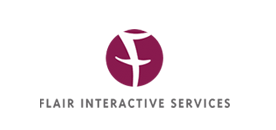 In my "Choosing a Web Content Management System" ebook, which is available on Amazon, I talk about common mistakes that people make when choosing and implementing a new content management system such as Sharepoint, Wordpress, Joomla, Drupal or Hubspot.
In my "Choosing a Web Content Management System" ebook, which is available on Amazon, I talk about common mistakes that people make when choosing and implementing a new content management system such as Sharepoint, Wordpress, Joomla, Drupal or Hubspot.
By popular demand, I'm including the first five items in my Top 10 CMS Mistakes list below. Are you doing any of these?
1) No clear business goal
What are you trying to accomplish with your CMS implementation? What are the business reasons for beginning this effort and why do you need to get there? Your strategic goals and business requirements should be the driving force behind every aspect of your project, and they can help you maintain scope, plan your timeline, determine your budget and allocate appropriate resources. Don’t even think about starting a CMS effort without this information documented and approved by all relevant stakeholders.
Most of my clients say that they know exactly what their potential and existing customers, members or clients want. However, when we sit down and ask their users, we hear very different answers (sometimes drastically different). After defining your business goals and requirements, user research is undoubtedly THE #1 way to save yourself a lot of money and time on your project. I guarantee that you will be surprised—and in some cases, shocked—to hear what your users really want. Whether you utilize online surveys, focus groups, questionnaires, personal phone calls, low-cost web-based user testing or high-end lab testing, ASK YOUR USERS what they want. They’ll tell you loud and clear. Keep in mind that user research doesn’t have to be expensive (you can do some for free or for less than $100), but it will pay for itself tenfold.
I’ve seen dozens (probably hundreds) of clients get so starry-eyed over the capabilities of a new CMS or the latest-and-greatest web technology that they end up doing way too much for their initial launch or redesign. Instead, think carefully about what your team can realistically handle. You don’t have to implement a particular feature RIGHT NOW just because your CMS offers it. Remember, when you add pages, features and functionality, you will need additional resources and money to support, maintain, enhance and upgrade them. Start small—smaller than you THINK you can handle—and do that successfully. After you see measurable success with that effort, then add on.
When searching for a CMS, keep in mind that there is no such thing as a PERFECT tool. All content management systems—regardless of price point, clientele or maturity—are lacking in some features or functionality, have areas in need of improvement, and may crash or freeze occasionally (although ideally the latter is rare). Unless you have an unlimited budget, you will likely need to make some concessions or remove some items from your “wish list” for the time being. Your goal should be to find the one that is the best fit for your organization, not one that’s a perfect fit. Your list of top 10 requirements (see chapter 8) comes in handy here, so you should focus on those needs first instead of getting hung up on the other minor details. Remember the Pareto Principle (see chapter 4).
Every web site—no matter how large or small—needs to have one or more dedicated content managers who are responsible for keeping content up-to-date. This should never be a part-time or one-person job, except in very rare cases when a site is extremely small. A content manager’s role is varied and may include any or all of the following: creating pages, modifying pages, uploading images, tagging pages and images with meta data, managing analytics, working with developers, designers and content developers (writers), and—if the content manager has development skills—coding. Don’t underestimate the amount of work involved with keeping a site up and running or managing updates. Some large-scale sites have hundreds of content managers who handle content for a specific division, product line, country, region or department. You may find it useful to have separate roles for content analysts, content managers, content developers, subject-matter experts and other content-related functions.
Want to read the other five mistakes, as well as myths, tips and best practices about choosing a web CMS? Buy my ebook on Amazon or contact us today to find out how we can help you with your CMS project. We've helped hundreds of clients—including McDonald's Corp., Deloitte & Touche, Zebra Technologies, Celsis International, Grund America and others—choose, implement and manage their web CMS.


